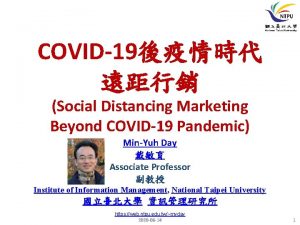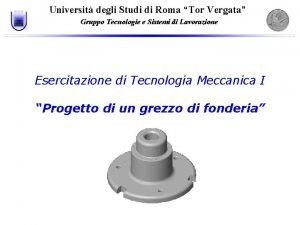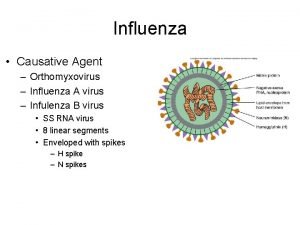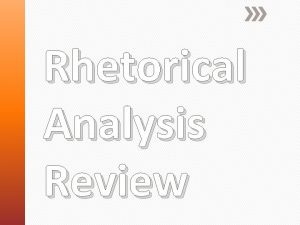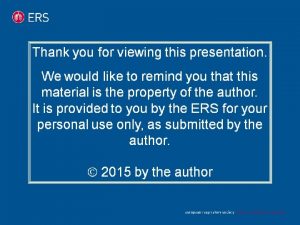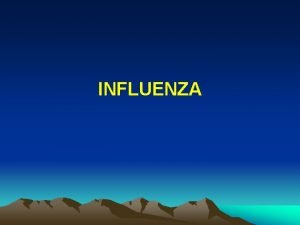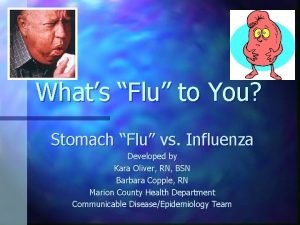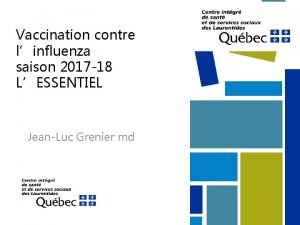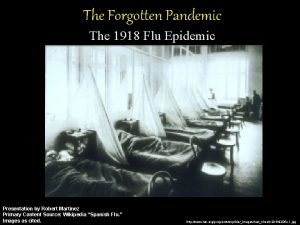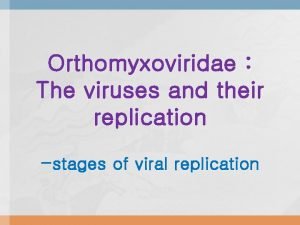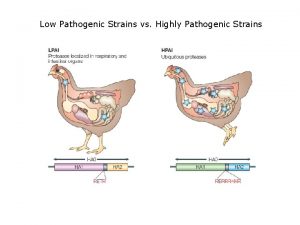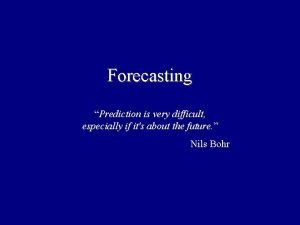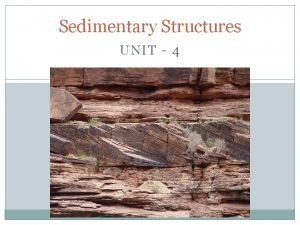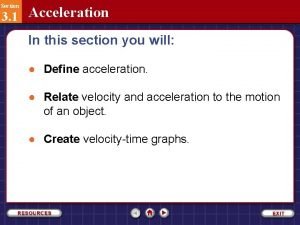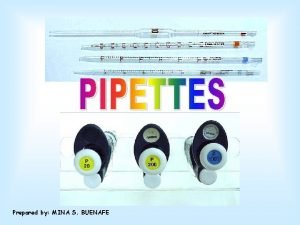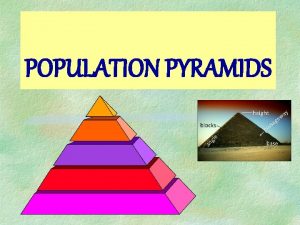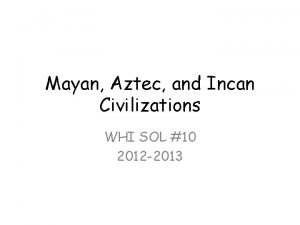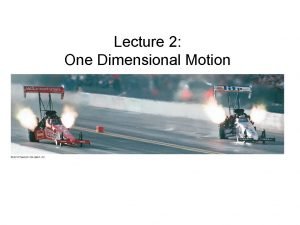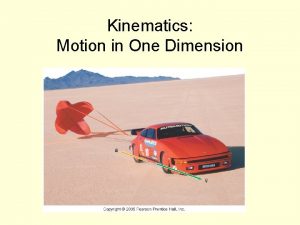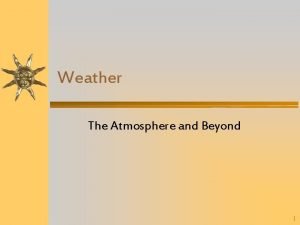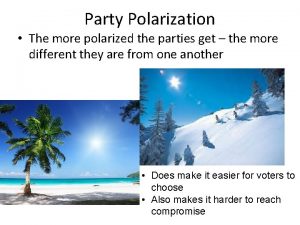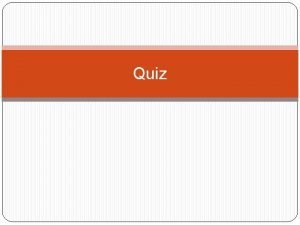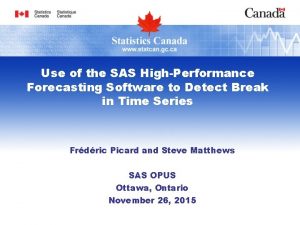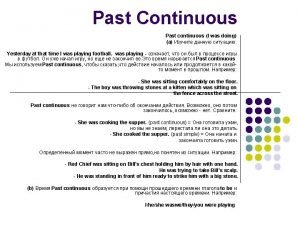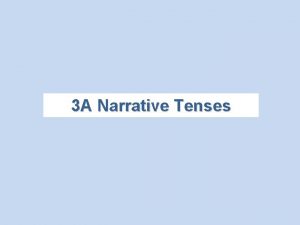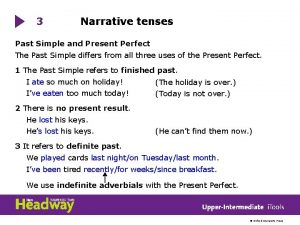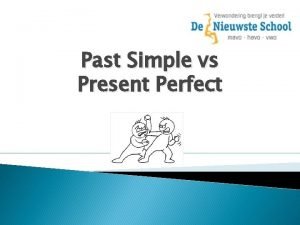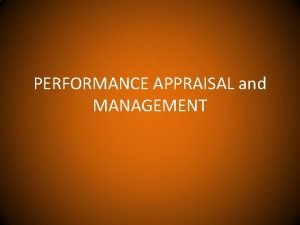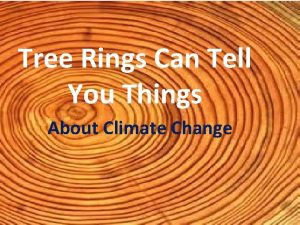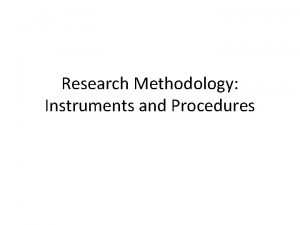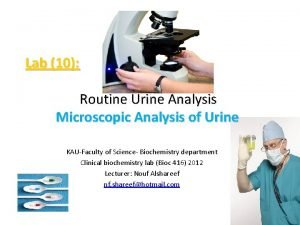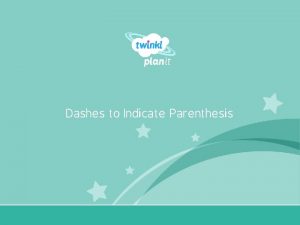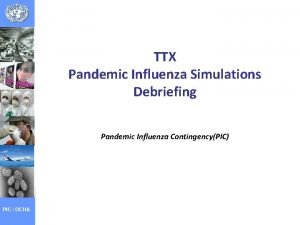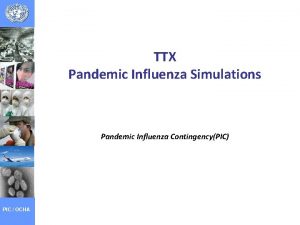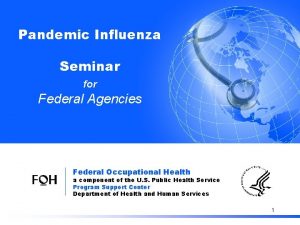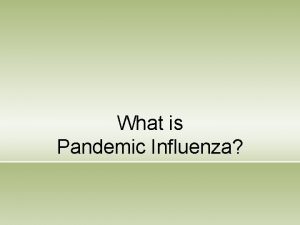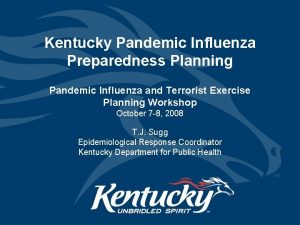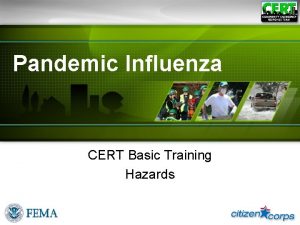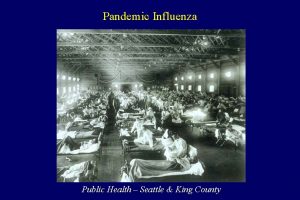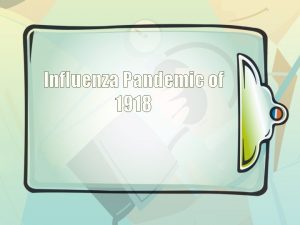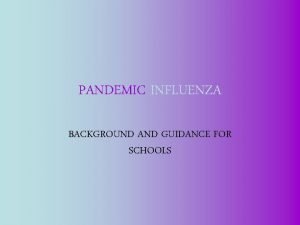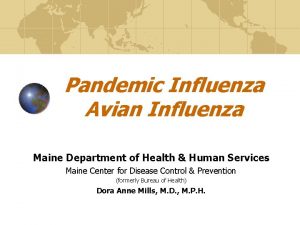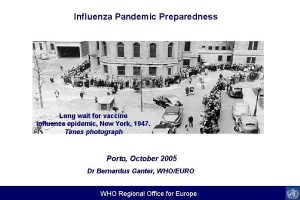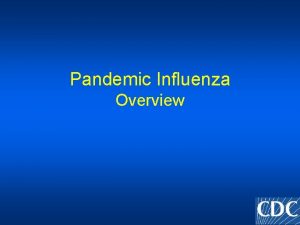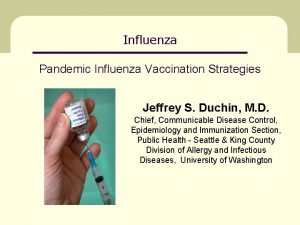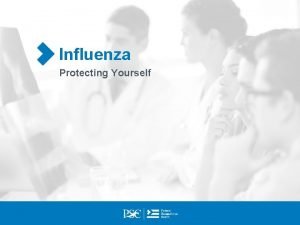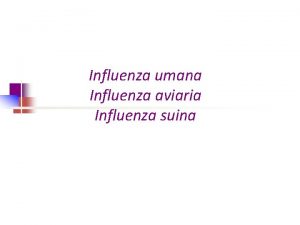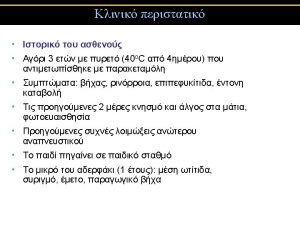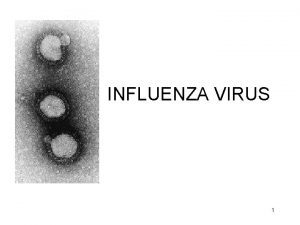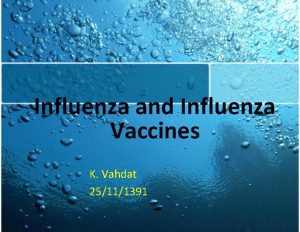Pandemic Influenza Forecasting Does Past Performance Indicate Future






























































- Slides: 62

Pandemic Influenza Forecasting: Does Past Performance Indicate Future Performance? Institute for Mathematical Sciences (IMS), Singapore Workshop on Mathematical models for the Study of the Infection Dynamics of Emergent and Re-emergent Diseases in Humans 22 -26 October 2007 Julian W Tang Department of Microbiology The Chinese University of Hong Kong

Different types of mathematical models: Biofluiddynamics

Different types of mathematical models: Biofluiddynamics

Different types of mathematical models: Biofluiddynamics

Different types of mathematical models: Cosmological

Different types of mathematical models: Cosmological

Different types of mathematical models: Cosmological

Summary n Previous influenza pandemic R 0 estimates: n have been based on behaviour of past influenza pandemics (1918, 1957, 1968).

Summary n Previous influenza pandemic R 0 estimates: n have been based on behaviour of past influenza pandemics (1918, 1957, 1968). n And for the next pandemic: n the world’s population has increased several times n rapid, frequent travel is the norm n the next pandemic strain is unknown

Summary (cont) n However: n previous outbreak reports may be unreliable n asymptomatic cases probably were not recorded n not all symptomatic cases were laboratory confirmed

Summary (cont) n However: n previous outbreak reports may be unreliable n asymptomatic cases probably were not recorded n not all symptomatic cases were laboratory confirmed, n Even if they were confirmed as influenza A, no sequencing was available to confirm the no. of true secondary cases from the same index case – they could have been sick from another viral infection

Summary (cont) n However: n previous outbreak reports may be unreliable n asymptomatic cases probably were not recorded n not all symptomatic cases were laboratory confirmed, n Even if they were confirmed as influenza A, no sequencing was available to confirm the no. of true secondary cases from the same index case – they could have been sick from another viral infection n Hence, estimates of R 0 from previous influenza pandemics are probably inaccurate – but how inaccurate?

“The best data we have” R 0=? coughs Infected index case comes to school Enters a susceptible population (e. g. a classroom of children)

“The best data we have” Exposed, infected, asymptomatic R 0=5? (As estimated by contemporary infection control team) R 0=11 (As estimated by God) Exposed, infected, symptomatic

Exposed, infected, symptomatic, but from index case on the school bus that morning) “The best data we have” Exposed, infected, asymptomatic, not counted as 2 o case (e. g. lab testing only performed for symptomatic cases) R 0=5? (As estimated by contemporary infection control team) R 0=10 (As estimated by God) Exposed, infected, symptomatic

R 0=20 (2003)

R 0=20? (2003) R 0<21? (2004)

R 0=20? (2003) R 0<21? (2004) R 0<2 -3? (2004)

Transmissibility of 1918 Pandemic Influenza (Supplementary Information) Christina E. Mills (1), James M. Robins (1, 2), Marc Lipsitch (1, 3) (1) Department of Epidemiology, Harvard School of Public Health, 677 Huntington Avenue, Boston, Massachusetts 02115, USA (2) Department of Biostatistics, Harvard School of Public Health, 677 Huntington Avenue, Boston, Massachusetts 02115, USA (3) Department of Immunology and Infectious Diseases, Harvard School of Public Health, 677 Huntington Avenue, Boston, Massachusetts 02115, USA Mills CE, Robins JM, Lipsitch M. Nature. 2004 Dec 16; 432(7019): 904 -6. Supplementary Discussion “Two recent papers have used estimates of the basic reproductive number much higher than those reported here, up to 20 (ref. 25) or 21 (ref. 26). We have endeavoured to understand the reasons for this major divergence in estimates. This effort has been hampered by ambiguities in the original reports from which the data underlying the estimates of Gog (25) and Fraser (26) are derived. ”


Supplementary Material. Mills CE, Robins JM, Lipsitch M. Transmissibility of 1918 pandemic influenza. Nature. 2004 Dec 16; 432(7019): 904 -6. Supplementary Discussion “One source of data is an outbreak of influenza A/H 1 N 1 in January-February 1978 in a British boarding school (27). The report of this outbreak gives the number of children “confined to bed” on each day of the epidemic. If one interpreted “confined to bed” as a measure of prevalence of infectiousness”


Supplementary Material. Mills CE, Robins JM, Lipsitch M. Transmissibility of 1918 pandemic influenza. Nature. 2004 Dec 16; 432(7019): 904 -6. Supplementary Discussion “One source of data is an outbreak of influenza A/H 1 N 1 in January-February 1978 in a British boarding school (27). The report of this outbreak gives the number of children “confined to bed” on each day of the epidemic. If one interpreted “confined to bed” as a measure of prevalence of infectiousness” - Presumably meaning - being infected? Assuming bed-bound as soon as symptomatic for “illness” rather than “infection control” reasons?

Supplementary Material. Mills CE, Robins JM, Lipsitch M. Transmissibility of 1918 pandemic influenza. Nature. 2004 Dec 16; 432(7019): 904 -6. Supplementary Discussion “and if one used latent and infectious periods of the sort assumed in our study, then one would indeed infer a very large R (on the order of 20) from these data, because the growth in the number “confined to bed” has an initial doubling time of less than 1 day (vs. ~3 days in our data sets). Under these assumptions, one would have to infer that the transmissibility of influenza A/H 1 N 1 in this boarding school (the year of the subtype’s reintroduction) was much higher than the estimates we report. ”

Supplementary Material. Mills CE, Robins JM, Lipsitch M. Transmissibility of 1918 pandemic influenza. Nature. 2004 Dec 16; 432(7019): 904 -6. Supplementary Discussion “and if one used latent and infectious periods of the sort assumed in our study, then one would indeed infer a very large R (on the order of 20) from these data, because the growth in the number “confined to bed” has an initial doubling time of less than 1 day (vs. ~3 days in our data sets). Under these assumptions, one would have to infer that the transmissibility of influenza A/H 1 N 1 in this boarding school (the year of the subtype’s reintroduction) was much higher than the estimates we report. ” - How do you judge whether one set of assumptions is better than another? From a biological, or mathematical viewpoint?

Supplementary Material. Mills CE, Robins JM, Lipsitch M. Transmissibility of 1918 pandemic influenza. Nature. 2004 Dec 16; 432(7019): 904 -6. Supplementary Discussion “We suspect, however, that a better explanation for the extremely rapid increase in the number of children “confined to bed” is the timing of ascertainment, since confinement to bed is not in fact equivalent to biological infectiousness (viral shedding). ”

Supplementary Material. Mills CE, Robins JM, Lipsitch M. Transmissibility of 1918 pandemic influenza. Nature. 2004 Dec 16; 432(7019): 904 -6. Supplementary Discussion “We suspect, however, that a better explanation for the extremely rapid increase in the number of children “confined to bed” is the timing of ascertainment, since confinement to bed is not in fact equivalent to biological infectiousness (viral shedding). ” - Confinement to bed (for symptomatic reasons) implies a symptomatic state (or are some students malingering – not unusual nowadays? ). This can be variable in severity and in degree of tolerance for each individual, thus the time spent mobile whilst symptomatic and infectious, is variable for each person.

Supplementary Material. Mills CE, Robins JM, Lipsitch M. Transmissibility of 1918 pandemic influenza. Nature. 2004 Dec 16; 432(7019): 904 -6. Supplementary Discussion “We suspect, however, that a better explanation for the extremely rapid increase in the number of children “confined to bed” is the timing of ascertainment, since confinement to bed is not in fact equivalent to biological infectiousness (viral shedding). ” - Confinement to bed (for symptomatic reasons) implies a symptomatic state. This can be variable in severity and in degree of tolerance for each individual, thus the time spent mobile whilst symptomatic and infectious, is variable for each person. - Also, for all respiratory viruses, they certainly appear to be infectious during their symptomatic period, but also, possibly, for 12 -24 hours before symptom onset (Fraser et al. 2004; Wu et a. 2006? )

Supplementary Material. Mills CE, Robins JM, Lipsitch M. Transmissibility of 1918 pandemic influenza. Nature. 2004 Dec 16; 432(7019): 904 -6. Supplementary Discussion “Moreover, confinement to bed may reduce or increase an individual’s opportunities for transmission, depending on living conditions and hygiene. ”

Supplementary Material. Mills CE, Robins JM, Lipsitch M. Transmissibility of 1918 pandemic influenza. Nature. 2004 Dec 16; 432(7019): 904 -6. Supplementary Discussion “Moreover, confinement to bed may reduce or increase an individual’s opportunities for transmission, depending on living conditions and hygiene. ” - Yes! Exactly the point. If friends come to visit (especially in boarding schools), e. g. room-mates, etc. , a degree of secondary infection can continue – and they still need to visit the bathroom (contact? duration of contact required to transmit? ). Also, most symptomatic patients are not completely prostrate, and will tend to walk around, talk to people (it is very boring just lying in bed).

Supplementary Material. Mills CE, Robins JM, Lipsitch M. Transmissibility of 1918 pandemic influenza. Nature. 2004 Dec 16; 432(7019): 904 -6. Supplementary Discussion “An alternate (not mutually exclusive) hypothesis is that transmission was more intense in this boarding school than in the general population”

Supplementary Material. Mills CE, Robins JM, Lipsitch M. Transmissibility of 1918 pandemic influenza. Nature. 2004 Dec 16; 432(7019): 904 -6. Supplementary Discussion “An alternate (not mutually exclusive) hypothesis is that transmission was more intense in this boarding school than in the general population” – Another respiratory virus, adenovirus (see Abstract), is well known to be more aggressive in high-density military barracks than in the general population – a boarding school environment is probably very similar. It would not be surprising if a new pandemic influenza strain behaved in a similar manner – though we have no idea what virus this will be at the moment.


Supplementary Material. Mills CE, Robins JM, Lipsitch M. Transmissibility of 1918 pandemic influenza. Nature. 2004 Dec 16; 432(7019): 904 -6. Supplementary Discussion “or (even more speculatively) that the strain introduced by a single student returning from Hong Kong was especially transmissible. ”


Supplementary Material. Mills CE, Robins JM, Lipsitch M. Transmissibility of 1918 pandemic influenza. Nature. 2004 Dec 16; 432(7019): 904 -6. Supplementary Discussion “or (even more speculatively) that the strain introduced by a single student returning from Hong Kong was especially transmissible. ” – But, all of this is speculation anyway – it is a different interpretation of the same outbreak. Of course, host factors may play a role in whether an infected individual becomes a ‘super-spreader’, or even just a ‘great’ or ‘aboveaverage’ -spreader’. Anyway, what is meant by ‘especially transmissible’ anyway? R >20, or R >3?

Supplementary Material. Mills CE, Robins JM, Lipsitch M. Transmissibility of 1918 pandemic influenza. Nature. 2004 Dec 16; 432(7019): 904 -6. Supplementary Discussion “We believe that the estimate of R~20 from these data is unlikely for another reason: 251 of the 763 children remained uninfected in this outbreak, which is inconsistent with an R in excess of ~3 (assuming a well-mixed population)”


Supplementary Material. Mills CE, Robins JM, Lipsitch M. Transmissibility of 1918 pandemic influenza. Nature. 2004 Dec 16; 432(7019): 904 -6. Supplementary Discussion “We believe that the estimate of R~20 from these data is unlikely for another reason: 251 of the 763 children remained uninfected in this outbreak, which is inconsistent with an R in excess of ~3 (assuming a well-mixed population)” – This is making an assumption about an assumption, i. e. assuming that R is not 20 and then assuming that there must be a reason for this! It is always possible to have some susceptibles uninfected, even in a major outbreak, perhaps due to social distancing/ chance/ variability shedding concentration, or unique host immune responses.

Supplementary Material. Mills CE, Robins JM, Lipsitch M. Transmissibility of 1918 pandemic influenza. Nature. 2004 Dec 16; 432(7019): 904 -6. Supplementary Discussion “We believe that the estimate of R~20 from these data is unlikely for another reason: 251 of the 763 children remained uninfected in this outbreak, which is inconsistent with an R in excess of ~3 (assuming a well-mixed population)” – This is making an assumption about an assumption, i. e. assuming that R is not 20 and then assuming that there must be a reason for this! It is always possible to have some susceptibles uninfected, even in a major outbreak, perhaps due to social distancing/ chance/ variability shedding concentration, or unique host immune responses. - E. g. in the case of the Singapore doctor, his pregnant wife and mother-in-law, quarantined together in the same room for 2. 5 weeks (Frankfurt March 2003), the doctor and his wife seroconverted ad were viraemic for SARS in multiple body secretions (blood, NPA, urine, stool), but amazingly, the mother-in-law never seroconverted.

Supplementary Material. Mills CE, Robins JM, Lipsitch M. Transmissibility of 1918 pandemic influenza. Nature. 2004 Dec 16; 432(7019): 904 -6. Supplementary Discussion “We believe that the estimate of R~20 from these data is unlikely for another reason: 251 of the 763 children remained uninfected in this outbreak, which is inconsistent with an R in excess of ~3 (assuming a well-mixed population)” - Also, how do they know that these boys were uninfected? No symptoms? Was there any subtype-specific influenza A laboratory confirmation performed for all ‘infected’ and ‘uninfected’ cases? Perhaps they were just asymptomatic, with good immune control and less shedding. Also, the diagnostic assays at that time were almost less sensitive than they are now, thus underestimating the no. of secondary cases.


Modern molecular epidemiology expectations and level of proof to demonstrate ‘true’ secondary cases. However, may still be difficult if similar to contemporary circulating viral strains


Supplementary Material. Mills CE, Robins JM, Lipsitch M. Transmissibility of 1918 pandemic influenza. Nature. 2004 Dec 16; 432(7019): 904 -6. Supplementary Discussion “However, given the limited description available, these hypotheses must remain speculative. ”

Supplementary Material. Mills CE, Robins JM, Lipsitch M. Transmissibility of 1918 pandemic influenza. Nature. 2004 Dec 16; 432(7019): 904 -6. Supplementary Discussion “However, given the limited description available, these hypotheses must remain speculative. ” - Just the like reasons given for extracting a lower R value from this outbreak report!

Supplementary Material. Mills CE, Robins JM, Lipsitch M. Transmissibility of 1918 pandemic influenza. Nature. 2004 Dec 16; 432(7019): 904 -6. Supplementary Discussion “In summary, we believe that these higher estimates result from a combination of ambiguity in the quantities measured (in the case of the boarding school outbreak) and in the interpretation of parameters in papers reporting earlier analyses. ”

Supplementary Material. Mills CE, Robins JM, Lipsitch M. Transmissibility of 1918 pandemic influenza. Nature. 2004 Dec 16; 432(7019): 904 -6. Supplementary Discussion “In summary, we believe that these higher estimates result from a combination of ambiguity in the quantities measured (in the case of the boarding school outbreak) and in the interpretation of parameters in papers reporting earlier analyses. ” - But surely this could go either way? We all tend to believe/see what we want to, yes? This is a consequence of mathematicians trying to interpret clinical outbreak data, without the practical hand-on experience of the common pitfalls and limitations inherent in collecting and reporting such data.

Supplementary Material. Mills CE, Robins JM, Lipsitch M. Transmissibility of 1918 pandemic influenza. Nature. 2004 Dec 16; 432(7019): 904 -6. Supplementary Discussion We cannot, however, exclude the possibility that the English boarding school outbreak actually represented a more rapid spread (and therefore, we infer, higher value of R) than those we have analyzed for larger populations in the main text. “

Supplementary Material. Mills CE, Robins JM, Lipsitch M. Transmissibility of 1918 pandemic influenza. Nature. 2004 Dec 16; 432(7019): 904 -6. Supplementary Discussion We cannot, however, exclude the possibility that the English boarding school outbreak actually represented a more rapid spread (and therefore, we infer, higher value of R) than those we have analyzed for larger populations in the main text. “ -No, of course you cannot! But the lower R value has now been widely accepted as real! If there is uncertainty. Yet, why go for a very specific lower estimate, instead of suggesting all possible ranges of R, as Fraser et al. 2004, did…? Practical, political economic reasons/pressures? Perhaps, but the virus will not pay any attention to this!

Fig. 2. Parameter estimates. Plausible ranges for the key parameters R 0 and (see main text for sources) for four viral infections of public concern are shown as shaded regions. The size of the shaded area reflects the uncertainties in the parameter estimates. The areas are color-coded to match the assumed variance values for() and S() of Fig. 1 appropriate for each disease, for reasons that are apparent in Fig. 3. Fraser C, Riley S, Anderson RM, Ferguson NM. Factors that make an infectious disease outbreak controllable. Proc Natl Acad Sci U S A. 2004 Apr 20; 101(16): 6146 -51.

Mills et al. (2004)’s estimate of R (<3) for pandemic influenza, a respiratory virus, is similar to of HIV – a sexually transmitted disease acquired only via intimate contact. Fig. 2. Parameter estimates. Plausible ranges for the key parameters R 0 and (see main text for sources) for four viral infections of public concern are shown as shaded regions. The size of the shaded area reflects the uncertainties in the parameter estimates. The areas are color-coded to match the assumed variance values for() and S() of Fig. 1 appropriate for each disease, for reasons that are apparent in Fig. 3. Fraser C, Riley S, Anderson RM, Ferguson NM. Factors that make an infectious disease outbreak controllable. Proc Natl Acad Sci U S A. 2004 Apr 20; 101(16): 6146 -51.

Fraser et al. (2004)’s approach is probably more realistic (in the absence of any facts), taking into account the possible uncertainties of the behaviour of a new virus. Mills et al. (2004)’s estimate of R (<3) for pandemic influenza, a respiratory virus, is similar to of HIV – a sexually transmitted disease acquired only via intimate contact. Fig. 2. Parameter estimates. Plausible ranges for the key parameters R 0 and (see main text for sources) for four viral infections of public concern are shown as shaded regions. The size of the shaded area reflects the uncertainties in the parameter estimates. The areas are color-coded to match the assumed variance values for() and S() of Fig. 1 appropriate for each disease, for reasons that are apparent in Fig. 3. Fraser C, Riley S, Anderson RM, Ferguson NM. Factors that make an infectious disease outbreak controllable. Proc Natl Acad Sci U S A. 2004 Apr 20; 101(16): 6146 -51.

Conclusions We are all human and often, we see what we want to see. In ambiguous data, it is even easier to see what we want to see.

Conclusions We are all human and often, we see what we want to see. In ambiguous data, it is even easier to see what we want to see. The fact that this same outbreak report was used in at least two different papers by 2 different groups of mathematicians, and was interpreted to give very different R values (1 -3 vs >20) by each group, suggests that the interpretation is still open.

Conclusions We are all human and often, we see what we want to see. In ambiguous data, it is even easier to see what we want to see. The fact that this same outbreak report was used in at least two different papers by 2 different groups of mathematicians, and was interpreted to give very different R values (1 -3 vs >20) by each group, suggests that the interpretation is still open. Is such ambiguous data helpful or misleading? The points raised in this presentation can be applied to any outbreak report, and probably none of them will present definitive proof (by modern standards now) of epidemiological linkage.

Conclusions We are all human and often, we see what we want to see. In ambiguous data, it is even easier to see what we want to see. The fact that this same outbreak report was used in at least two different papers by 2 different groups of mathematicians, and was interpreted to give very different R values (1 -3 vs >20) by each group, suggests that the interpretation is still open. Is such ambiguous data helpful or misleading? The points raised in this presentation can be applied to any outbreak report, and probably none of them will present definitive proof (by modern standards now) of epidemiological linkage. Of course, a high R will be difficult to deal with in any optimistic or practical way for the purposes of pandemic planning.

Conclusions We are all human and often, we see what we want to see. In ambiguous data, it is even easier to see what we want to see. The fact that this same outbreak report was used in at least two different papers by 2 different groups of mathematicians, and was interpreted to give very different R values (1 -3 vs >20) by each group, suggests that the interpretation is still open. Is such ambiguous data helpful or misleading? The points raised in this presentation can be applied to any outbreak report, and probably none of them will present definitive proof (by modern standards now) of epidemiological linkage. Of course, a high R will be difficult to deal with in any optimistic or practical way for the purposes of pandemic planning. So, perhaps a low R was interpreted from this outbreak to keep everyone happy and in this way, perhaps also, has given us a false sense of security. Time will tell…

So does past performance indicate future performance for pandemic influenza? n No, I don’t think so because: n Too many other parameters have changed (world population/density increase, more rapid, frequent air travel, etc. )

So does past performance indicate future performance for pandemic influenza? n No, I don’t think so because: n Too many other parameters have changed (world population/density increase, more rapid, frequent air travel, etc. ) n Another influenza pandemic is not necessarily likely based on previous pandemic events (why should it be? )

So does past performance indicate future performance for pandemic influenza? n No, I don’t think so because: n n n Too many other parameters have changed (world population/density increase, more rapid, frequent air travel, etc. ) Another influenza pandemic is not necessarily likely based on previous pandemic events (why should they be? ) If it does occur, it may still not be an H 5 virus, but whatever it is, there is no reason why estimates of R from previous influenza pandemic viruses should have any bearing at all on the R for the new influenza pandemic virus n although the virus will still be influenza A, both the environment and virus subtype will be different from previous pandemics

Is another influenza pandemic imminent/ inevitable/ just a matter of time? Not sure!
 Future perfect and future continuous exercises
Future perfect and future continuous exercises Future perfect e future continuous
Future perfect e future continuous Covid 19 pandemic summary
Covid 19 pandemic summary Interpandemic period
Interpandemic period Pandemic tabletop exercise template
Pandemic tabletop exercise template Mathalicious pandemic answer key
Mathalicious pandemic answer key Pip framework
Pip framework Spinte metallostatiche
Spinte metallostatiche The causative agent of influenza
The causative agent of influenza The great influenza rhetorical analysis essay
The great influenza rhetorical analysis essay Albert osterhaus
Albert osterhaus Influenza
Influenza Stomach flu vs influenza
Stomach flu vs influenza Is influenza a airborne disease
Is influenza a airborne disease Rimantidina
Rimantidina Influenza vaccine dosage chart 2019-2020
Influenza vaccine dosage chart 2019-2020 Influenza ww1
Influenza ww1 Influenza virus replication
Influenza virus replication Low pathogenic avian influenza
Low pathogenic avian influenza Forecasting is difficult especially about the future
Forecasting is difficult especially about the future How do cross beds form
How do cross beds form Section 3 acceleration
Section 3 acceleration Pipette with frosted bands
Pipette with frosted bands Beehive shaped pyramid
Beehive shaped pyramid Inca civilization
Inca civilization What does a negative acceleration indicate
What does a negative acceleration indicate What does a negative acceleration indicate
What does a negative acceleration indicate What does a negative acceleration indicate
What does a negative acceleration indicate Why does low air pressure usually indicate stormy weather
Why does low air pressure usually indicate stormy weather What does the graph indicate?
What does the graph indicate? In the given below statement what does the pf indicate
In the given below statement what does the pf indicate Sas high performance statistics
Sas high performance statistics Past perfect and past progressive
Past perfect and past progressive Past perfect continuous and simple
Past perfect continuous and simple Past perfect past continuous past simple exercise
Past perfect past continuous past simple exercise Come past simple
Come past simple презент прогрессив таблица
презент прогрессив таблица Narrative tenses past simple past continuous
Narrative tenses past simple past continuous Past simple continuous
Past simple continuous Past perfect vs past simple vs past continuous
Past perfect vs past simple vs past continuous Narrative tenses past perfect
Narrative tenses past perfect Get present perfect
Get present perfect Future perfect presentation
Future perfect presentation Past future tense adalah
Past future tense adalah Future perfect future continuous exercises
Future perfect future continuous exercises Future nurse future midwife e learning
Future nurse future midwife e learning Future past continuous tense
Future past continuous tense Future plans present continuous
Future plans present continuous Future tenses summary
Future tenses summary Future plans and finished future actions
Future plans and finished future actions Future continuous
Future continuous Nulti kondicional
Nulti kondicional Past oriented appraisal methods
Past oriented appraisal methods Behaviorally anchored rating scales
Behaviorally anchored rating scales Performance management vs performance appraisal
Performance management vs performance appraisal All performance attributes designated as joint performance
All performance attributes designated as joint performance What two things do tree rings indicate
What two things do tree rings indicate What cloud types would indicate convective turbulence?
What cloud types would indicate convective turbulence? It is the part where you indicate the research instrument
It is the part where you indicate the research instrument Maneuvering boards
Maneuvering boards Waxy cast
Waxy cast What do the roman numerals in a cation's name indicate
What do the roman numerals in a cation's name indicate Dashes vs parentheses
Dashes vs parentheses


